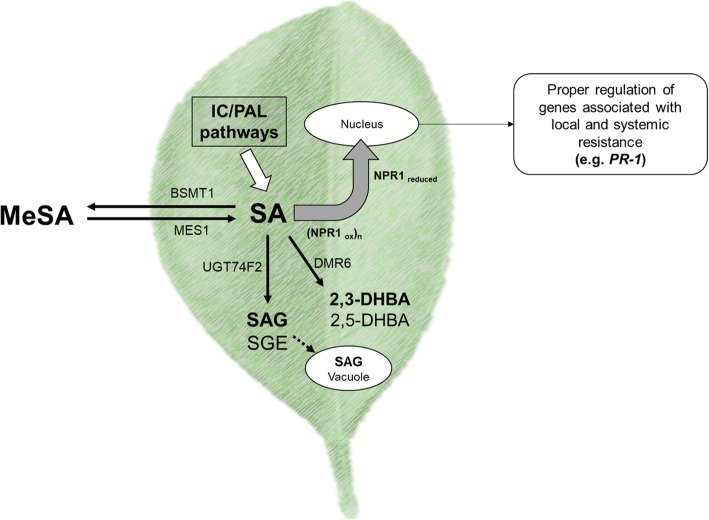Fig. 1.
Working model of the SA-dependent pathway and SA modifications in Citrus sinensis. Proposed (simplified) model of the molecular mechanisms involved in the transcriptional regulation of SA modification and activation of defense-associated responses via NPR1 in C. sinensis. Black line arrows indicate the synthesis of SA metabolites. Dashed line indicates transport to vacuole; thick, white arrow indicates the Isochorismate (IC) Phenylalanine ammonia-lyase pathways; and thick, gray arrow indicates the reduction and monomerization of NPR1. The abbreviations are as follows: isochorismate (IC) and phenylalanine ammonia-lyase (PAL) pathways. Molecules are abbreviated as follows: salicylic acid (SA), methyl salicylate (MeSA), SA 2-β-D-glucoside (SAG), salicylate glucose ester (SGE), 2,3-dihydroxybenzoic acid (2,3-DHBA) and 2,5-dihydroxybenzoic acid (2,5-DHBA). Proteins are abbreviated as: benzoic acid/ salicylic acid carboxyl methyltransferase 1 (BSMT1), Methylesterase 1 (MES1), Downy mildew resistance 6 (DMR6), UDP-glucosyltransferase 74F2 (UGT74F2), Nonexpresser of Pathogenesis-Related genes 1 oxidized or reduced forms (NPR1ox/NPR1reduced), Pathogenesis-related 1 gene (PR-1)

